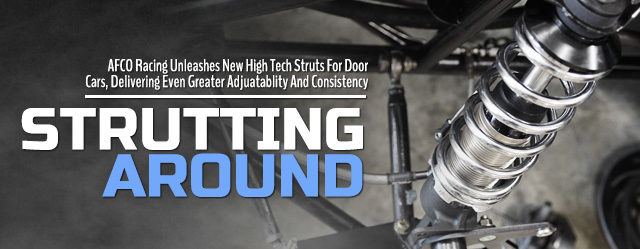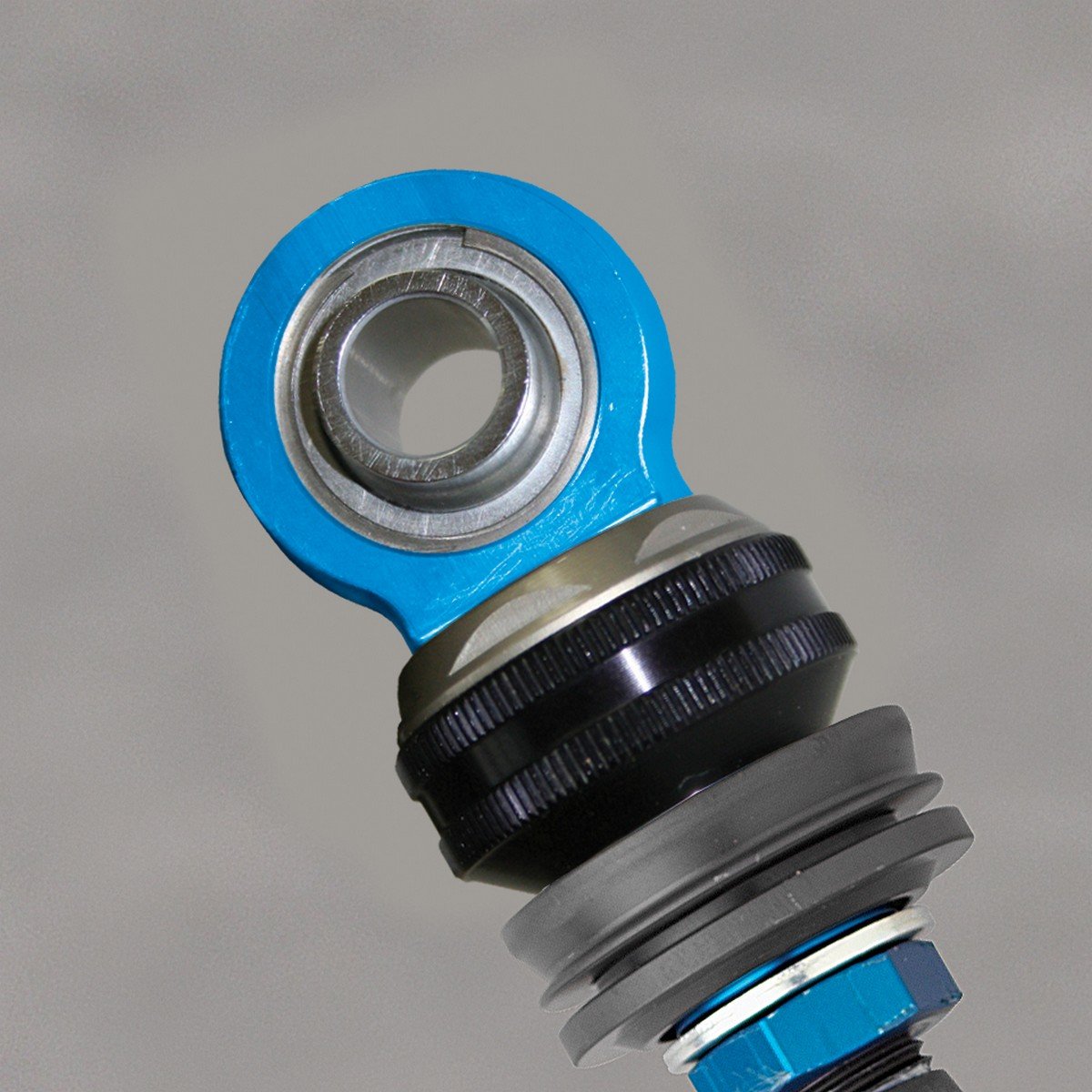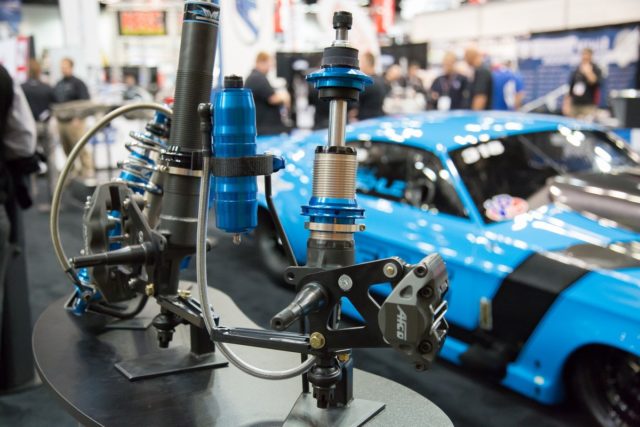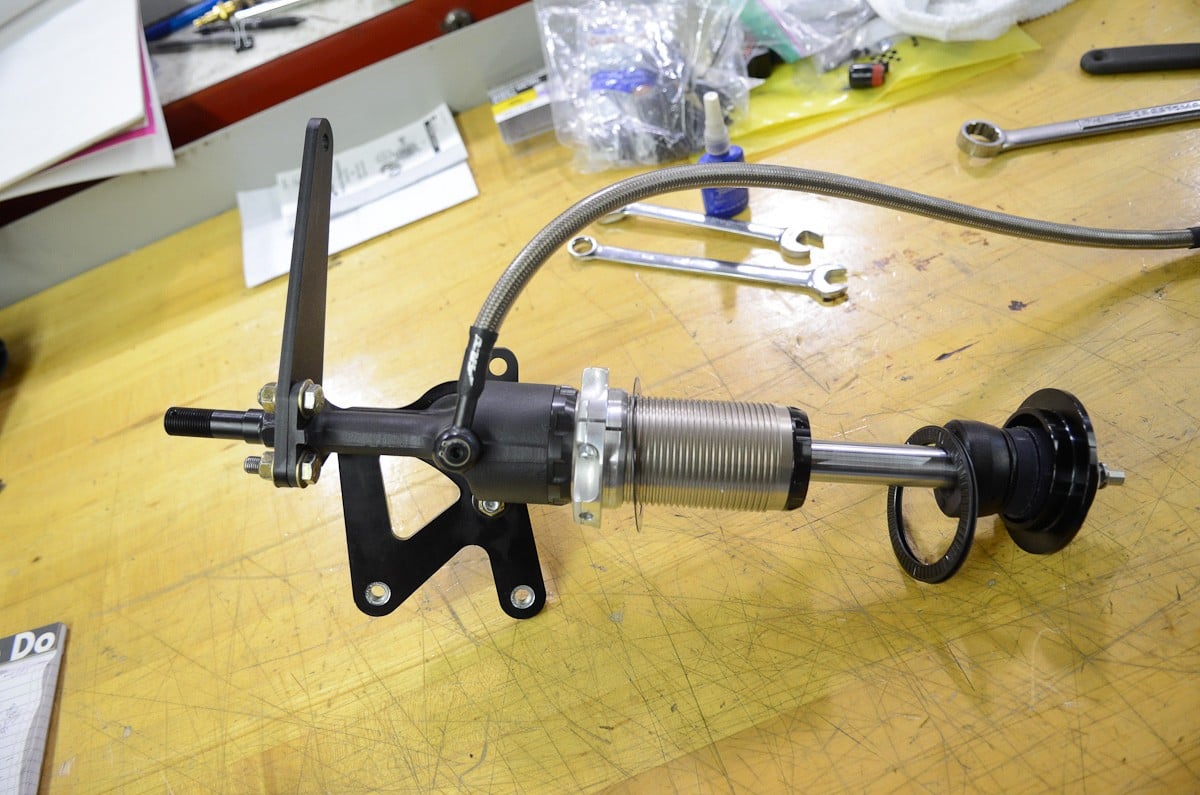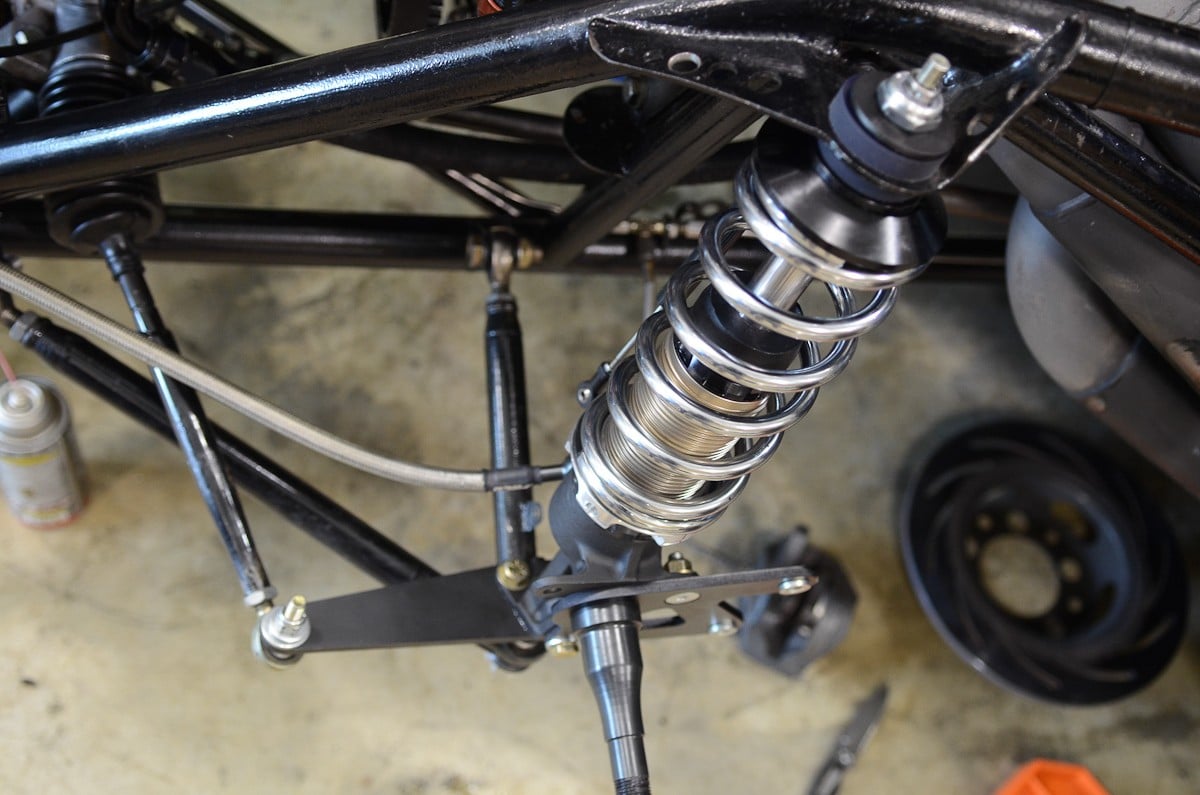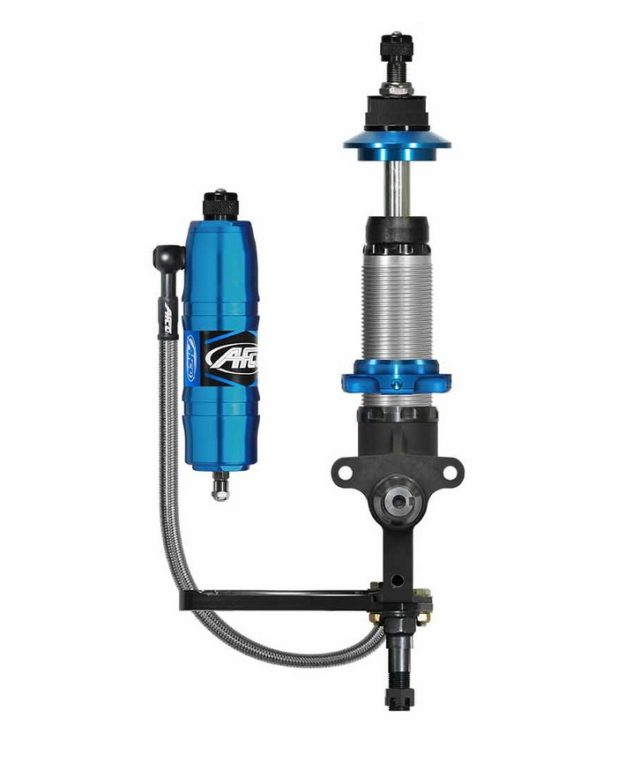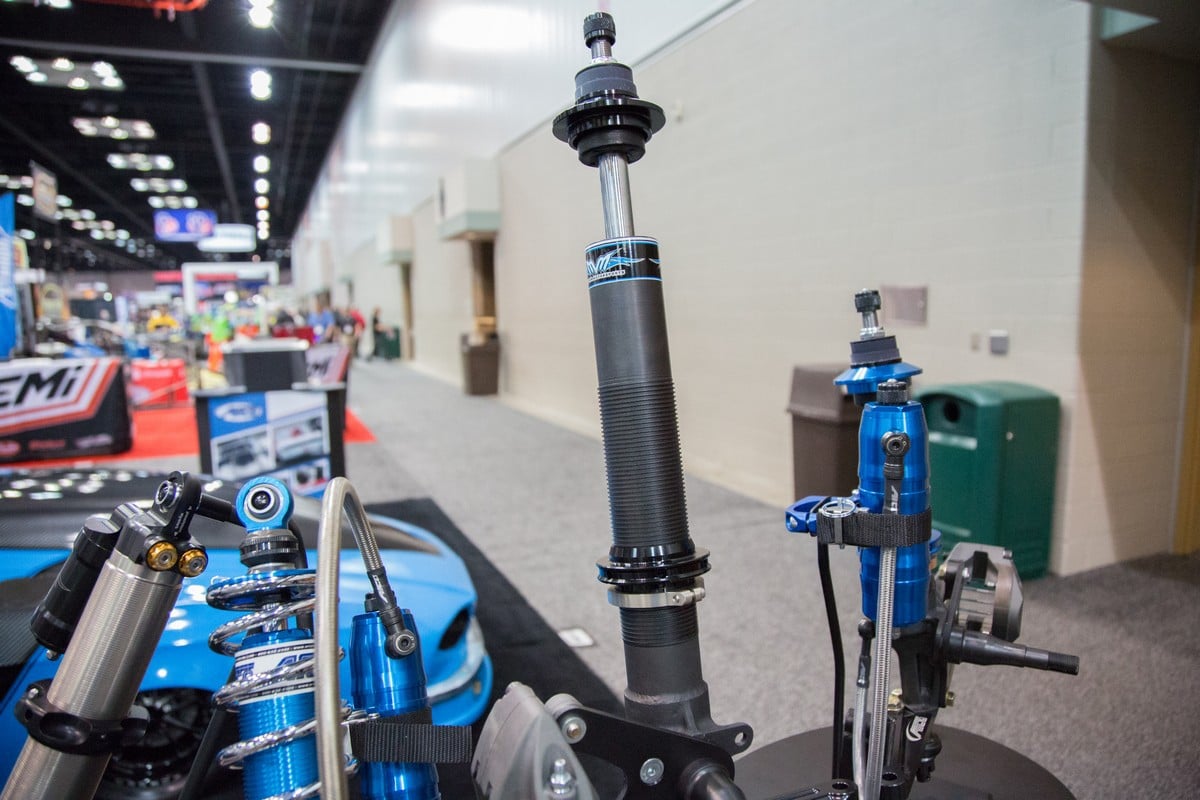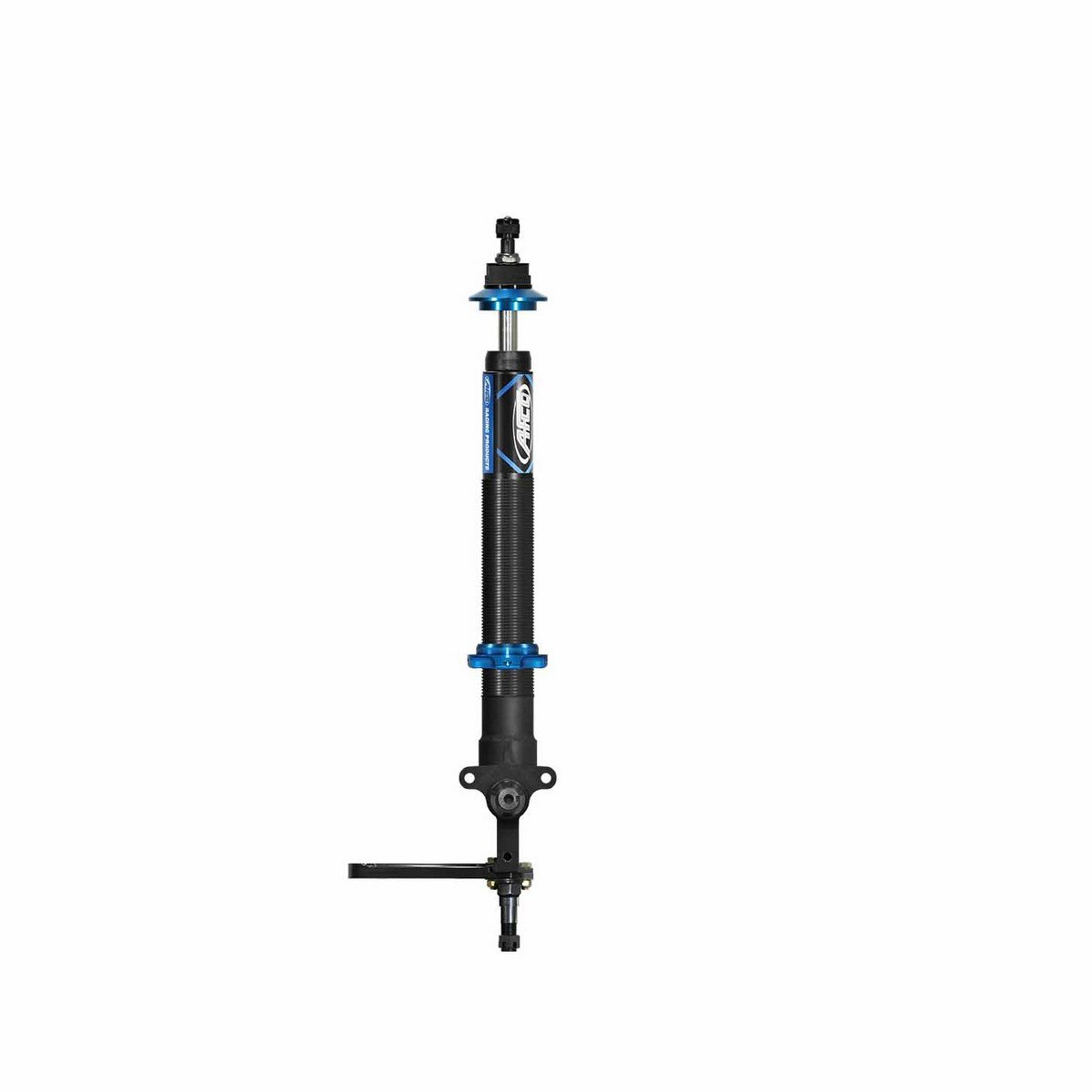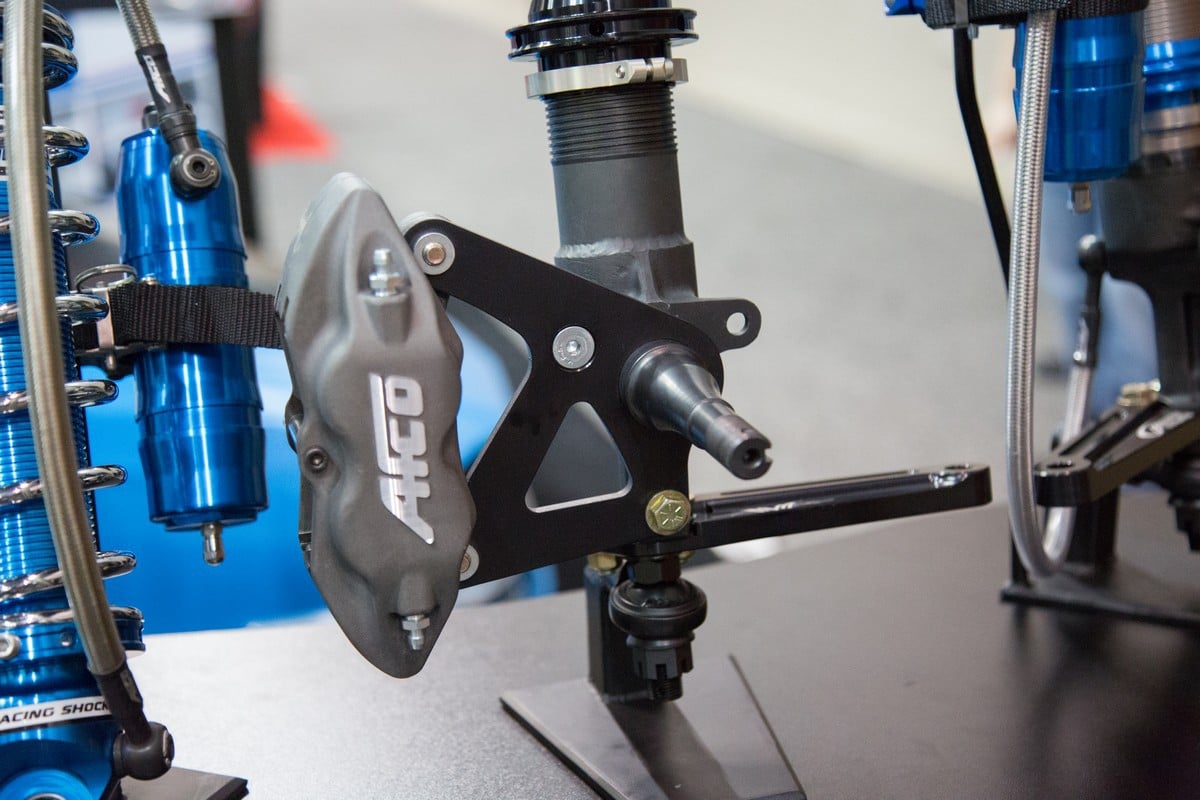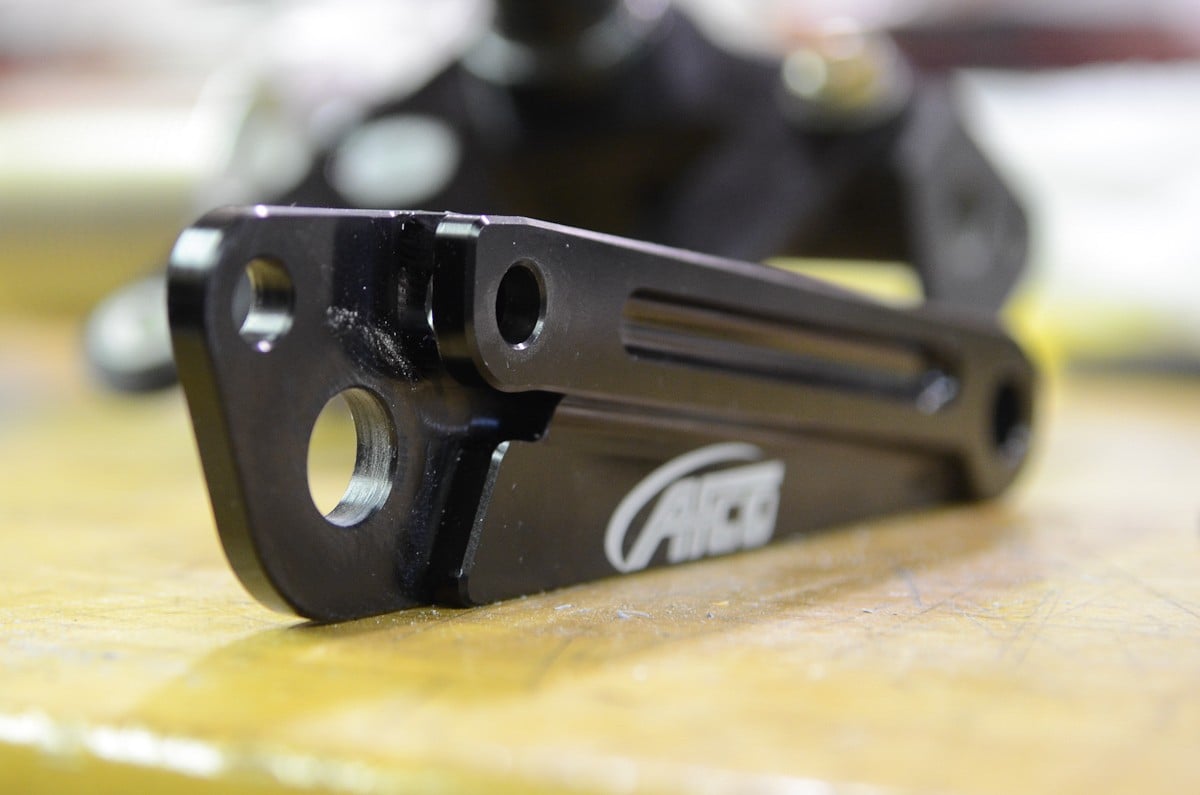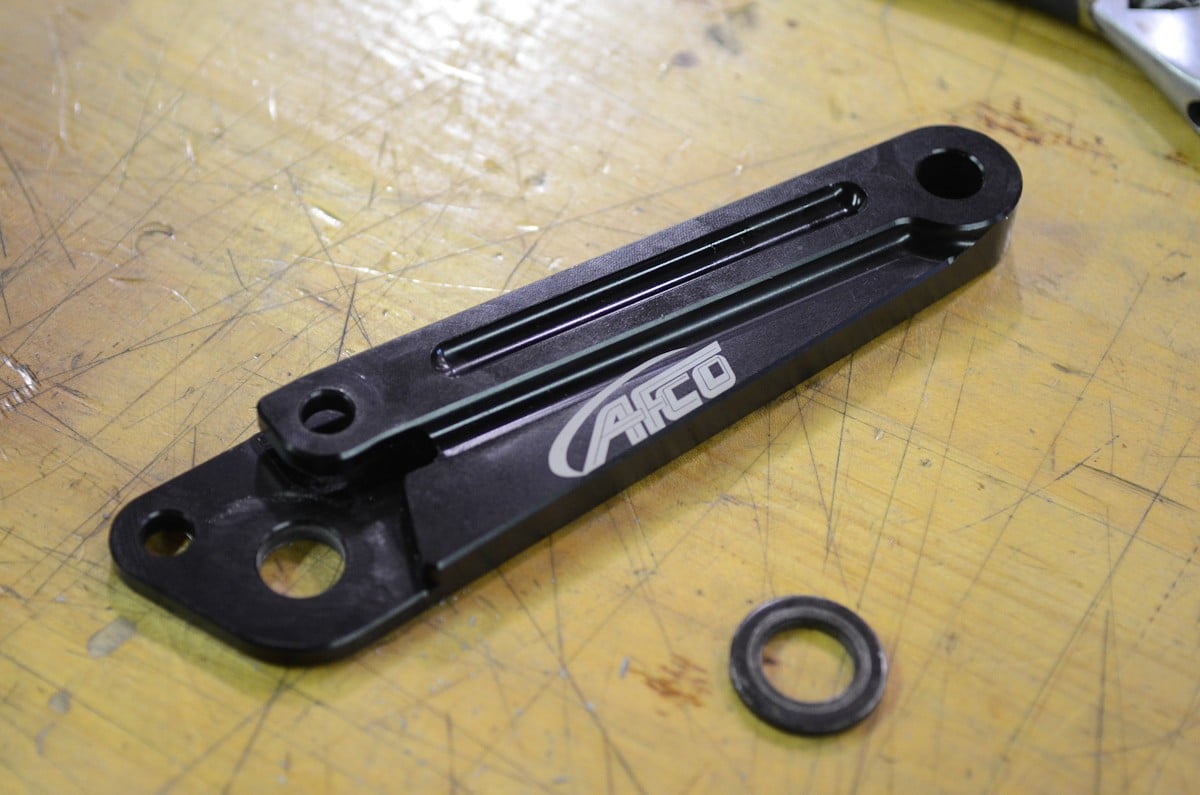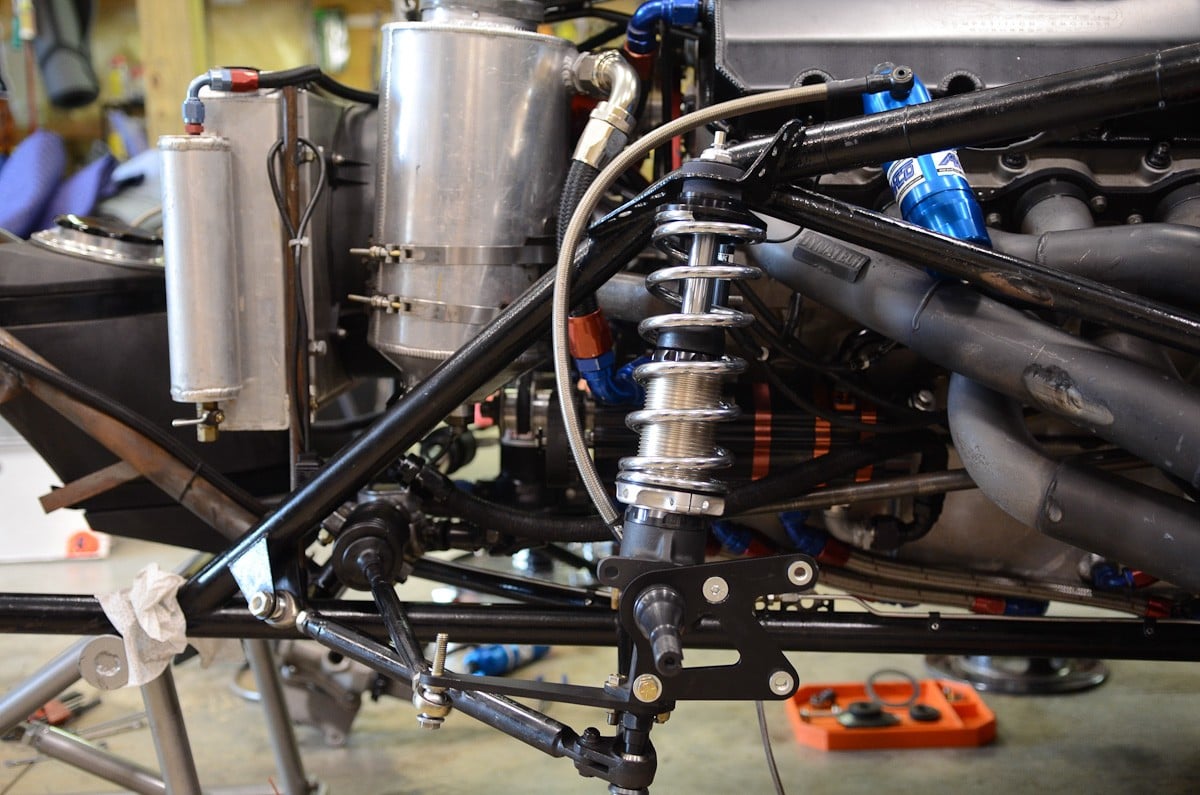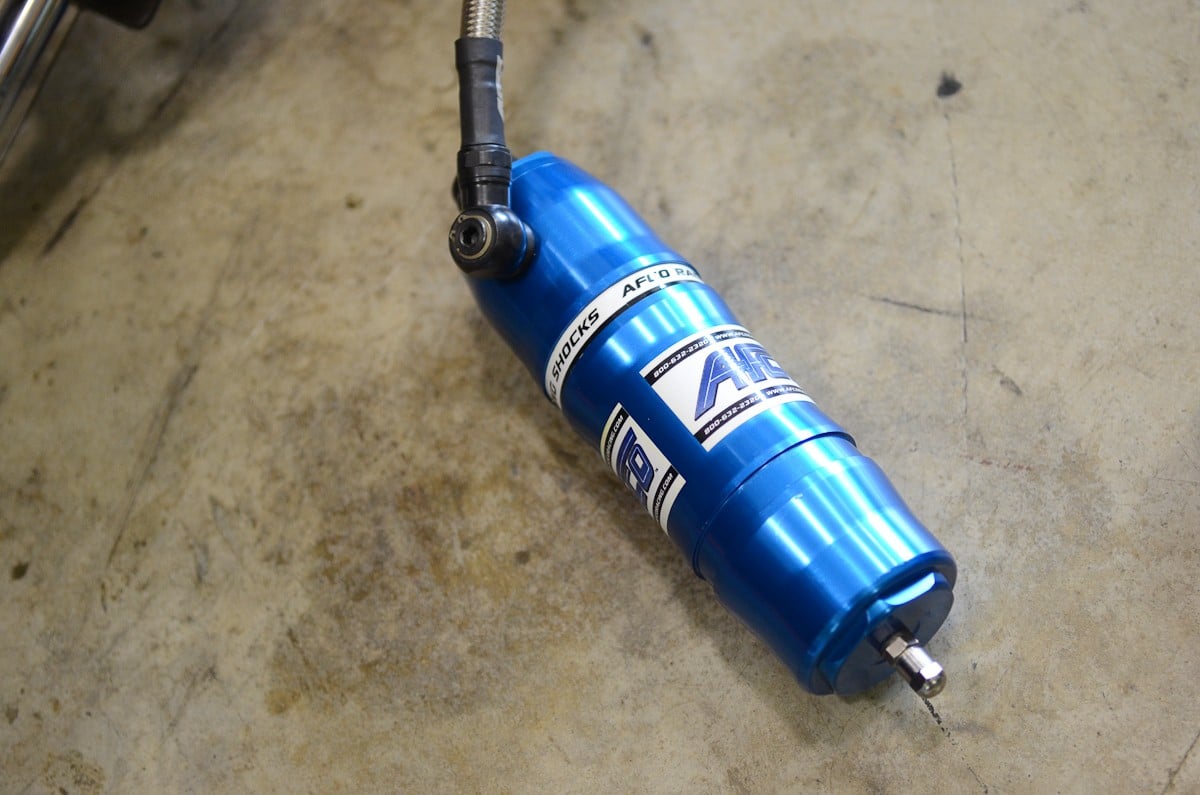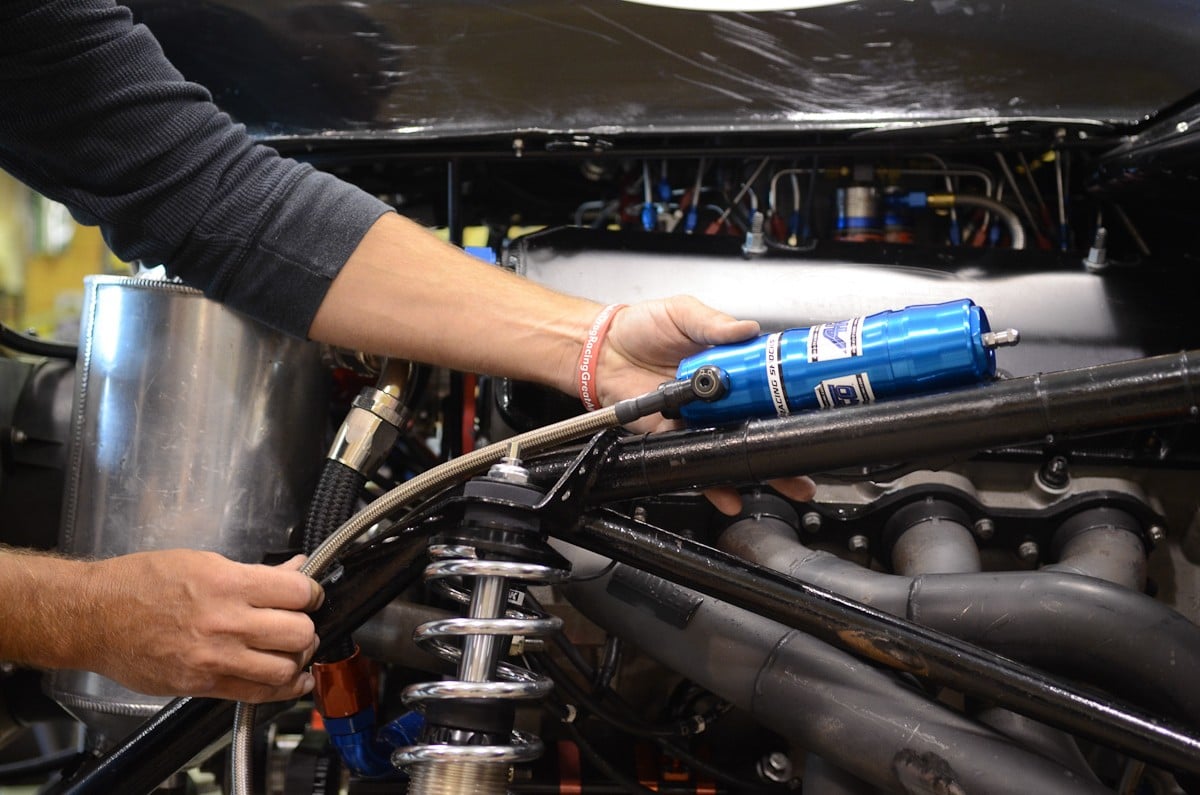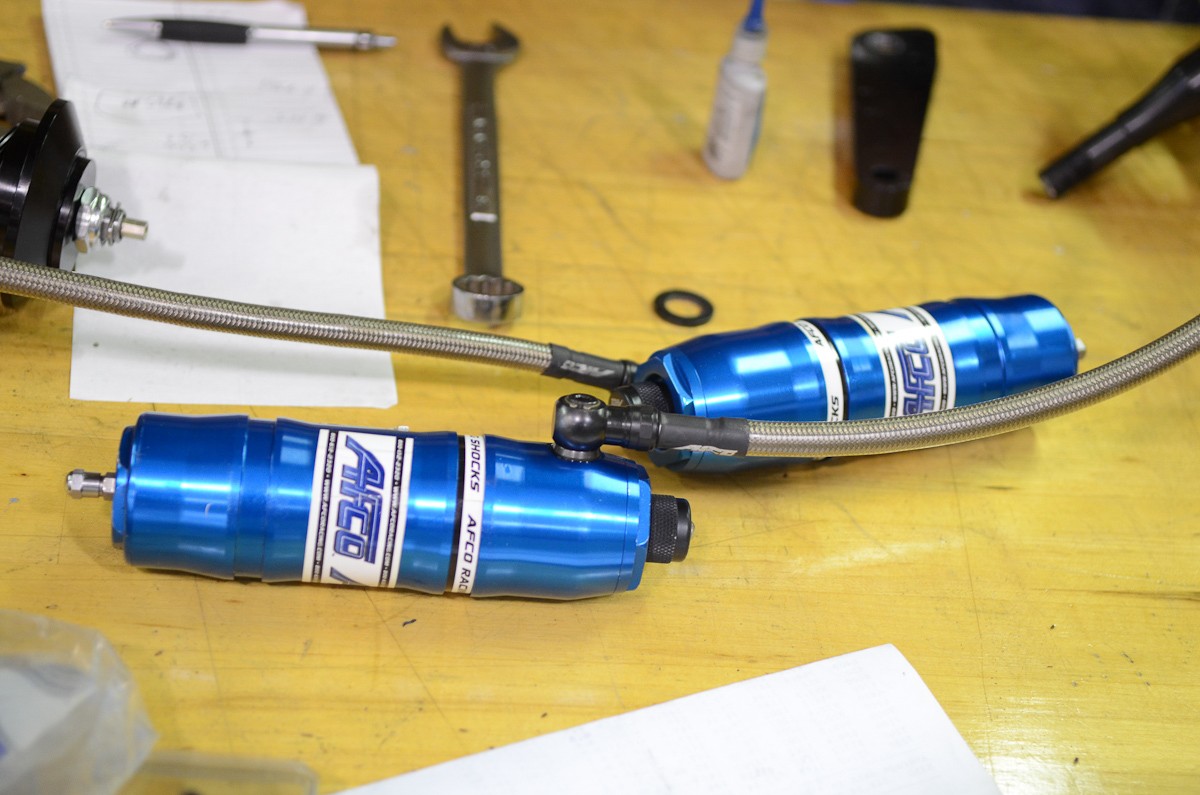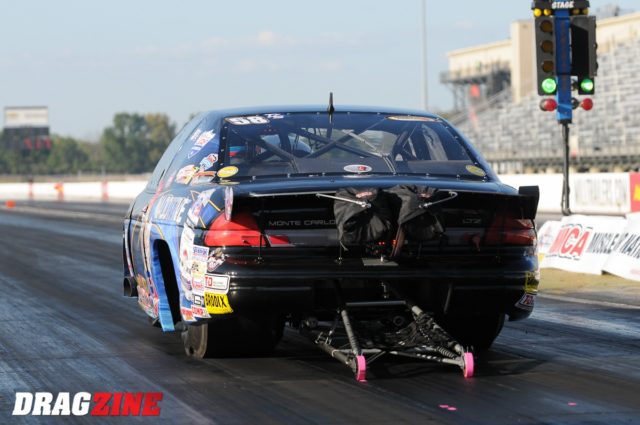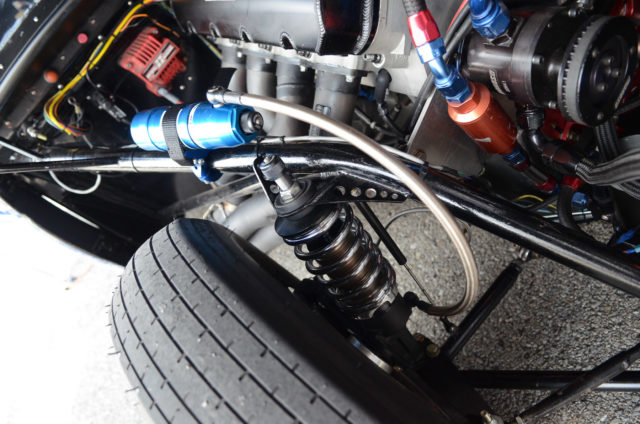Horsepower is what makes the drag racing world go ’round — every racer who rolls into the beams is always looking for more, any way they can get it. Having all that power is great, but it’s virtually useless unless you can put it to the track in a controlled and predictable fashion. This makes the vehicle’s front and rear suspension as vital as the powerplant itself. To gain a greater understanding of how these elements affect performance, we enlisted Eric Saffell of AFCO to share greater insight into the company’s all-new doorslammer and chassis car struts to understand how they can help racers get the most out of the power they have on tap.
Strut-style suspensions have been used on door cars for decades, so the concept of how they function hasn’t changed, but using better components has become the focus. Racers and tuners have learned that when they have more adjustability in the suspension, they can compensate for varying track conditions, which allows them to apply more power earlier in the run, which in turn lowers elapsed times. Taking these ideas into account is what drove AFCO to create a new strut that can help racers at all levels make their cars more predictable at the track, no matter what power level they are trying to harness.
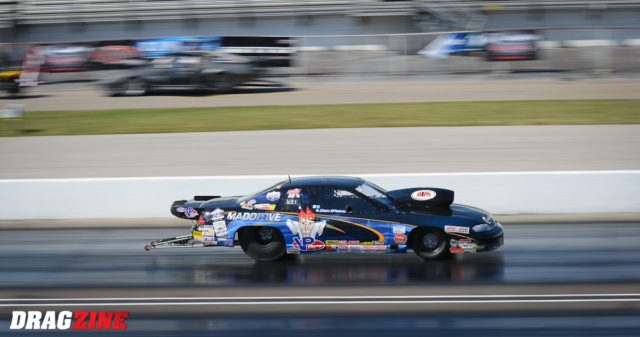 [2]
[2]AFCO’s new struts have been field-tested on cars like Don O’Neal’s Top Sportsman car to make sure they perform as needed.
Why Quality Struts Matter
The front suspension of a racecar has the important task of helping to begin the weight transfer process during a pass. Having the ability to fully control how quickly the weight transfers throughout the entire chassis is essential to making sure the car works consistently on any racing surface.
“While it is imperative to have high-quality shocks on the rear of the car, controlling pitch rotation at the launch can have dramatic results. Virtually everyone with a door car can benefit from struts that have a broad range of adjustment. Bracket cars can adjust to conditions for maximum consistency. Fast door cars like Top Sportsman, Radial vs The World, Pro Mod and others deal with high horsepower and torque that need a strut that can control how quickly the front end moves up at the hit,” says Saffell.
AFCO used nothing but the best parts and materials on their new line of struts for chassis and door cars.
A high-quality strut that can check all the boxes needed to control how the chassis reacts needs to have two main items on its resume. The strut must be able to control the front end of the car not only at the launch, but as it goes down the track, as well. This means it must be able to react to the amount of horsepower being thrown at it with the correct amount of extension damping, and be able to settle back down as the car moves down the track. The strut should also have the ability to be tuned to the track conditions the racer is seeing. Being able to tune the strut based on whether the wheel speed is too high or too low at the hit is crucial to the vehicle’s performance.
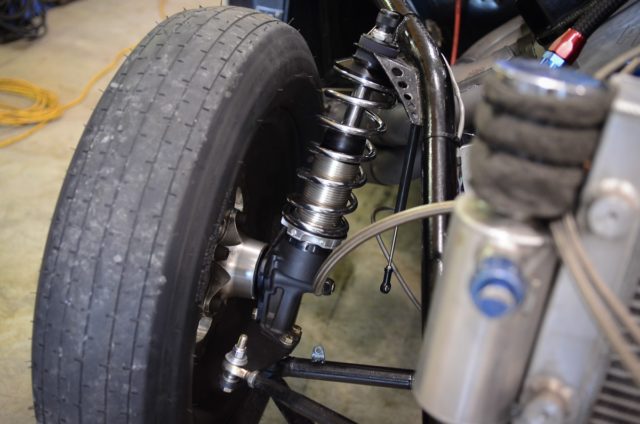 [5]
[5]The new chassis car struts are designed to fit almost any application and are already set up for spindles out of the box.
“We have worked very hard on providing the tuner with the ability to soften the extension and rotate quickly, or tighten down the extension and see very little drop out of the strut at launch. We have also worked on the compression side of the strut, so the car will track smoothly during the pass. Each track has its dip, bump, or seam where the concrete and asphalt meet, and the car must ride these irregularities without the driver feeling any of it,” Saffell says.
Real World Results
Don O’Neal’s nitrous-huffing Top Sportsman car was used as one of the test beds for the new chassis car strut. Saffell and O’Neal added the struts to the car with no baseline on where to start or what to do, but they saw results. As more passes were put on the car, they were able to make adjustments based on the data and saw the changes had an effect on the shock graphs immediately.
Making an analogy to a set of stairs, Saffell is able to better explain the concept of how a strut should work when it has the ability to be adjusted properly.
“We know instinctively how high to raise our foot when going up. When tuning a chassis, it is very important to know how many clicks to go so that the tuner will achieve the desired results when making adjustments. A moving target just won’t cut it here. Also, a premium strut must have a very wide range of adjustment from full soft to full stiff. The strut should be valved appropriately for the application to ensure that the tuner has adequate control available to them. A Pro Mod needs much stiffer valving than a Quick 8 car, but both cars must have the correct valve package for the given combination.”
The New AFCO Door Car Strut
Seeing the advantages a good front strut can bring to any racing program is something that any racer focused on winning would want to take advantage of. To address this, AFCO has designed a new spindle-mount strut that works on 1979-’93 Fox-body Mustangs, 1994-’04 SN95 Mustangs, 2005-’14 Mustangs, 1982-’92 Camaros, 2010-15 Camaros, and other applications. This longer strut has a universal construction that allows it to be used on either the left or right side of the car, and it’s packed full of features that racers will love.
We have worked very hard on providing the tuner with the ability to soften the extension and rotate quickly, or tighten down the extension and see very little drop out of the strut at launch. – Eric Saffell
“This model is available in four-inches of travel for cars that are sitting at a low minimum ride height and six-inches of travel for cars that, due to their ride height, require a longer unit. These struts are popular for Mustang applications, but also for non-Ford applications like the Chevy II where the O.E.-style front end isn’t good for drag racing or any chassis requiring a longer spindle-mount strut,” Saffell explains.
When a racer opens the box from AFCO, they’re greeted with a complete kit that will help make installing the struts fairly easy, which includes all the necessary hardware and appropriate steering arm as ordered.
The aluminum arm offered has been designed for a new car build and will locate the heim joint away from the wheel and tire to provide extra clearance. AFCO also has the option of a steel steering arm that is designed for race cars that are already completed where adjusting the tie rod ends isn’t available without some fabrication. This option is more like a bolt-on or conversion process to use the new strut.
The door car strut is available for several different applications and will help optimize suspension travel for any form of racing.
What these struts will provide to a racer is the ability to make solid adjustments with just a few clicks of the dial. Now, the racer can allow the front end of their car to move quicker when it launches to get more traction, control wheel speed, and become more consistent. The racer will also be able to make the extension of the strut stiffer to slow the rotation of the chassis when they have more traction available.
These are all critical items that a racer can use to help dial in their car in for specific track and weather conditions that will assist in making their car infinitely more predictable. Having that kind of control at their fingertips will make putting together a solid run much easier, therefore increasing their chances of winning in changing conditions during the racing season.
AFCO has beefed up its steering arm considerably, including where the tie rod attaches to the new struts, for extra rigidity.
The New AFCO Chassis Car Strut
With the rising popularity of Top Sportsman, Pro Mod, and oher forms of fast door car racing, AFCO decided to design a new strut that was dedicated to the chassis car market. This strut has a shorter stroke in a mono-tube design that also uses a double-adjustable canister. The strut is unique because of its size, tube design, and use of a canister all mixed into the same part. Thinking outside of the normal confines of strut design allowed AFCO to create a unit that can cover multiple applications with ease.
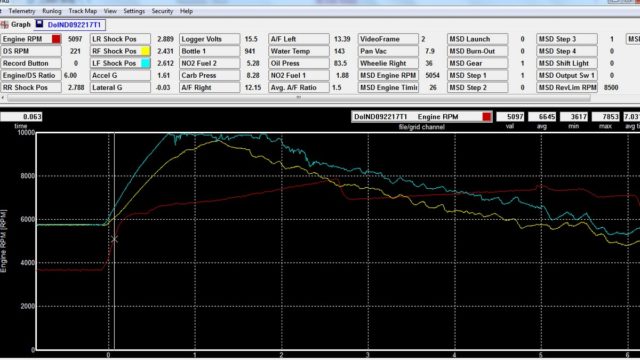 [15]
[15]In this screenshot from the Racepak that was taken on the first run with the new struts, the green (shock movement) and red trace (engine RPM) lines represent the front struts moving when the car launches. This shows the struts are able to quickly extend when O’Neal releases the transbrake at the start of the run. Since this run was made during the heat of the day and on a marginal track, the goal was to get the weight to transfer as quickly as possible for a baseline to make more adjustments.
The strut will come in three different lengths that can work in a variety of situations for different racers. A 2.5-inch travel strut is the first one that racers can choose that will replace struts of the same length, and it will provide a variety of adjustment points. The next strut will have 3.5-inches of travel, and this length can provide the tuner additional travel upward to give more performance and traction.
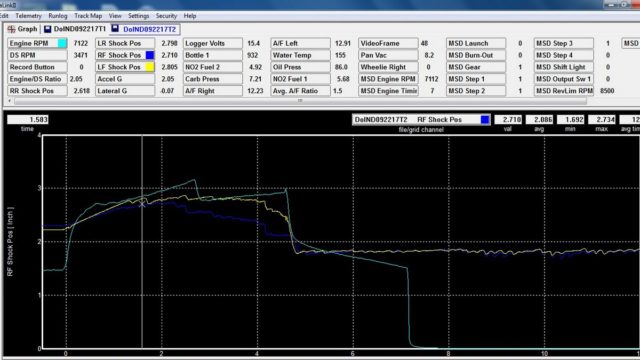 [16]
[16]In this graph, the strut traces are highlighted in blue and yellow trace. The rise of the angle and height of the traces are lower than the first graph from the first run. The track was in much better shape for this pass, so O’Neal was able to tighten the front end for better control pitch rotation. Since the chassis car strut offers a wide range of adjustment, O’Neal has the ability to tune the car for different track conditions like the marginal track on the first run, to the favorable track on the second.
Finally, the strut will be available in a 4.5-inch travel size. At this length, the strut can be used on cars that require a taller strut for more travel that provide a higher level of traction on a lower traction surface. With the increase in popularity of no-prep drag racing, this length should prove popular for builders and tuners wanting maximum adjustment.
The range of adjustment from soft to stiff is the widest on the market. – Eric Saffell
“The range of adjustment from soft to stiff is the widest on the market. Each adjustment is denoted with a click, offering the ability to count the number of clicks promotes exacting adjustments and removes guesswork when trying to count partial rotations. Also, with the ability to custom-valve these units, we can offer much more versatility and control than other brands on the market. As an example, we can install our Big Gun valving on extension to lock down the front on high horsepower applications,” Saffell explains.
One of the key features that AFCO incorporated into their chassis car strut is a nitrogen-filled canister. The canister itself uses a large piston inside that provides damping options and characteristics for cars that are making a lot of horsepower.
The canister system on the chassis car strut is compact in size, but robust in its abilities. These canisters can be mounted anywhere around the strut to make adjusting it a breeze.
Saffell explains further how these canisters help the chassis car strut function so well.
“The remote canister strut promotes a very wide range of adjustment on the extension and compression side for maximum tuning and control. The nitrogen charge in the canister eliminates cavitation or loss of damping control during the run. The internal pressure maintains a stable column of oil which further enhances full adjustment and chassis control.”
Inside the strut itself, AFCO paid close attention to the valving package, which makes the strut a potent product right out of the box. The valving that comes in the strut will cover the majority of applications for racers who purchase the struts.
“This standard package will have a very wide range of adjustment to promote tunability and control. However, custom valving is always an option,” Saffell says.
“We tested at Ohio Valley Dragway with the car and were pleased with the results. Our first run we allowed the strut to fully drop out. Because the track was so good and the car hit the wheelie bars so hard, we stiffened the extension on the front struts through two more passes to the extent that the front wheels were only dropping out 3/8-inch before the front end touched back down. This showcases much control these struts provide,” Saffell explains.
Making big power is easy, but being able to get that power to work for you is the key to winning at any level of drag racing. AFCO’s new struts provide racers with a plethora of options to help make tuning their cars much easier. In a world where “spinning ain’t winning,” AFCO’s struts will keep your car glued to the track no matter what the conditions are.
